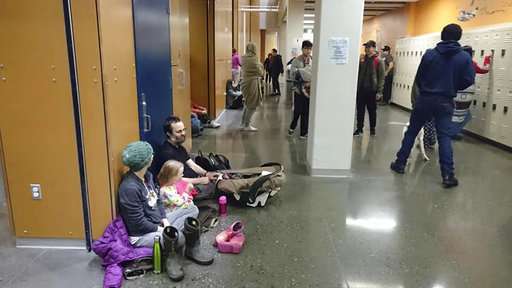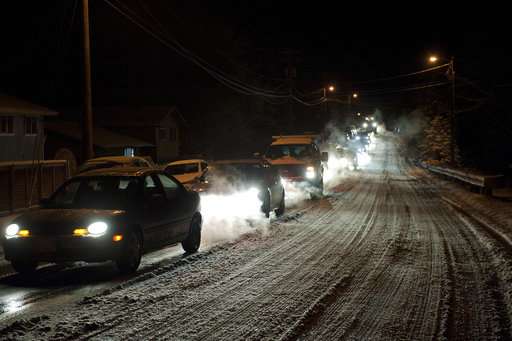Alaska quake shows complexity of tsunami warnings

The powerful earthquake that struck beneath the Gulf of Alaska early Tuesday generated a tsunami, but before gauges could show that it was very small, warnings went out to a vast swath of the state and British Columbia, while a lower-level alert targeted the rest of the West Coast.
The magnitude-7.9 earthquake set in motion complex analysis that eventually downgraded and called off all alerts in less than four hours, but the protocol for the initial warnings only considered magnitude and location, said David Hale, a lead decision maker at the National Tsunami Warning Center in Palmer, Alaska.
"We don't have the luxury of time to be able to gather the data necessary to determine whether there is or is not a wave," Hale said in a telephone interview with The Associated Press.
In deep water, a tsunami can travel at speeds in excess of 500 mph (805 kph), meaning residents of nearby coasts need to move immediately toward high ground or tall buildings.
The quake struck at 12:32 a.m. and was centered about 175 miles (280 kilometers) southeast of the city of Kodiak. It was given a preliminary magnitude of 8.0, upgraded briefly to 8.2 and then lowered to 7.9.
In the meantime, protocol tied to the initial magnitude and its location relatively near the coast required a "local" tsunami warning, encompassing the vast span from Attu Island in the westernmost Aleutian Islands to the border between British Columbia and Washington state.

The rest of the U.S. West Coast south to the California-Mexico border was put on a watch, indicating "something has occurred in the area that could have impacts at some point" and the need to pay attention to announcements, Hale said.
An earthquake generates a tsunami by forcing ocean water upward as one side of a fault rupture goes up and the other side goes down. But how the quake happens makes a difference. An undersea quake on a so-called thrust fault lifts a great deal of land and therefore more water. Another kind of fault, called a strike-slip, moves horizontally to the sea floor and pushes up less water.
After the initial alerts went out, the National Tsunami Warning Center turned to using models and looking at tide gauges in the area, Hale said.
Within 20 or 30 minutes, it was almost certain the quake occurred on a strike-slip fault that moves less water. After about 40 minutes, gauges showed that a tsunami had been generated, and officials compared data about the extent of the wave with the models.
Three tsunami-detection buoys in the area also detected the wave and showed it was small.

"At that point, we began whittling down the areas that are actually placed in alerts," Hale said.
At 3:12 a.m., the center issued its fifth message, confirming a tsunami, canceling warnings and watches but leaving south Alaska and the Alaska peninsula under a low-level advisory to expect some effects.
The center canceled that advisory an hour later and reported the maximum tsunami height was 0.7 of a foot (0.21 of a meter) at Old Harbor, Alaska.
© 2018 The Associated Press. All rights reserved.

















